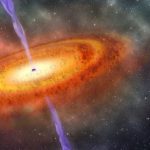 Weird Stuff
Weird Stuff  Weird Stuff
Weird Stuff  Our World
Our World 10 Archaeological Discoveries of 2025 That Refined History
 Weird Stuff
Weird Stuff 10 Fascinating Facts You Might Not Know About Snow
 Miscellaneous
Miscellaneous Top 10 Things Crypto Was Supposed to Change & What Actually Did
 History
History 10 Huge Historical Events That Happened on Christmas Eve
 Music
Music 10 Surprising Origin Stories of Your Favorite Holiday Songs
 History
History 10 Less Than Jolly Events That Occurred on December 25
 Weird Stuff
Weird Stuff 10 Funny Ways That Researchers Overthink Christmas
 Politics
Politics 10 Political Scandals That Sent Crowds Into the Streets
 Weird Stuff
Weird Stuff Ten Bizarre Facts About The Doge Meme
 Weird Stuff
Weird Stuff 10 Weird Things People Used to Do at New Year’s
 Our World
Our World 10 Archaeological Discoveries of 2025 That Refined History
 Weird Stuff
Weird Stuff 10 Fascinating Facts You Might Not Know About Snow
Who's Behind Listverse?

Jamie Frater
Head Editor
Jamie founded Listverse due to an insatiable desire to share fascinating, obscure, and bizarre facts. He has been a guest speaker on numerous national radio and television stations and is a five time published author.
More About Us Miscellaneous
Miscellaneous Top 10 Things Crypto Was Supposed to Change & What Actually Did
 History
History 10 Huge Historical Events That Happened on Christmas Eve
 Music
Music 10 Surprising Origin Stories of Your Favorite Holiday Songs
 History
History 10 Less Than Jolly Events That Occurred on December 25
 Weird Stuff
Weird Stuff 10 Funny Ways That Researchers Overthink Christmas
 Politics
Politics 10 Political Scandals That Sent Crowds Into the Streets
 Weird Stuff
Weird Stuff Ten Bizarre Facts About The Doge Meme
10 Almost Incomprehensible Scenes of Cosmic Chaos
The universe is so full of crazy happenings that it barely even registers when we read of exploding stars, planet-pinging asteroids, or black holes turning planets into spaghetti. However, the following discoveries are so violent, odd, or beyond the bounds of human experience and understanding that they’re almost incomprehensible.
Related: Top 10 Disturbing Secrets About Space Agencies
10 A VERY Bright Quasar
Amazing things discovered in the darkest, most remote regions of space often don’t receive names worthy of their might. Such is the thing cataloged as J043947.08+163415.7, which is incomprehensibly bright.
It’s a quasar, an active black hole gorging so piggishly that it can’t handle its appetite. As a result, it shoots a bunch of super-fast, super-hot material and radiation into space. Quasars are exceptionally illuminating, and the one in question, let’s call it J, shines with the brilliance of 600 trillion Suns. Yes, trillions with a T.
Its host galaxy is small and in the process of forming. Or so it was 12.8 billion years ago, as we’re seeing it, because this discovery stretches back almost to the birth of the universe itself. Just as awe-inspiring, the quasar would be invisible if not for the gravitational magnifying effect of a galaxy in front of it, which boosted the quasar’s brightness “by a factor of 50.” [1]
9 Two Neptunes Crashing into Each Other
We don’t have to tell you, but space is big. Really big, so it’s pretty rare for things just to randomly bump into each other out in the great beyond. But scientists think they saw the afterglow of something incredibly violent, a collision between two planets.
The would-be catastrophe occurred in a star system known as ASASSN-21qj, 1,800 lightyears away. Scientists think two giant icy planets hit each other, like two Neptunes colliding in psychedelic violence and forming a “hot, glowing mass of material hundreds of times larger than the original planets.”
Here’s a caveat: While random collisions can be very uncommon, such mash-ups occur much more frequently during the formative stages of planets and (exo)solar systems. During this period, lots of large, medium, and small pieces of rock may be careening about like bumper cars, leading to monumental crashes. At home, these same crashes gave us the Moon, made Mercury super thick, and knocked Uranus on its side.[2]
8 A Star That Only Halfway Exploded
Like a popped balloon or a dropped bottle of soda, one celestial object has exploded itself into a missile. Except it didn’t explode all the way—this celestial object went only partially supernova, sending itself shooting across the cosmos at about 600,000 miles per hour (965,606 km/h).
The white dwarf SDSS J1240+6710 is kind of puny, as may be hinted by its classification. It’s only about 40% of the mass of the Sun, and it possibly formed a binary system before blasting itself away from its former companion star.
It’s composed of some of the products of thermonuclear reactions, including oxygen, neon, aluminum, magnesium, and aluminum. Yet it lacks the heavier iron group that includes, unsurprisingly, iron and other heavier metals like nickel.
Based on its weird composition, it attempted to go supernova but didn’t have enough fuel. Therefore, it was only able to manage a partial supernova, a never-before observed event, say astronomers.[3]
7 Small Stars Break Debris Discs (to Birth Massive Planets)
Small, relatively cool, and with a lifespan of trillions of years, red dwarfs are the most common type of star in the universe. In our galaxy, about 66% of stars are red dwarfs. But with masses reaching about 50% that of the Sun, they’re seemingly too puny to pull in the amount of debris necessary to form huge planets.
That seems like a lot of wasted potential from a cosmic landscaping point of view. But astronomers recently discovered that red dwarfs produce planets much more quickly than anyone thought.
According to supercomputer simulations, the debris disks around red dwarfs sometimes fragment into multiple pieces. And when they do, they poop out gas giants ten times as massive as Jupiter. In only a few thousand years, a mere instant in cosmic time.
The study challenges current planet-forming theories, arguing that a surprising diversity of planets could become wild alien solar systems around little stars. So even the smallest stars exert an unexpectedly profound influence on the geography of the universe, creating crazy worlds beyond our imagination.[4]
6 The Rogue Black Hole Smashing through Space
Black holes are black and, therefore, usually invisible. Sometimes, they gobble up matter or puke up matter, showing themselves through destruction. Other times, black holes can calmly and nonchalantly float through space without any majorly obvious sign.
In February 2022, the world went wild over the “first-ever unambiguous discovery of a free-floating black hole.” The hole in question is located around 5,000 light years away and holds the mass of seven Suns. When its parent star exploded, it sent the black hole zooming through space at 28 miles per second (45 kilometers per second).
Apparently, it is an invisible object that may be the size of a city, which is pretty small in cosmic terms. How did scientists even find it? By the tiny amount that it deflected starlight around its heavy bulk. Oh, and there may be millions of these in our galaxy.
Wow, just one more thing to be worried about (or in awe of) in this giant, scary universe. [5]
5 The Boiling Planet
Planets covered in oceans and topped by hydrogen-filled skies (called Hycean planets) may be plentiful out in the universe. Imagine what crazy events or organisms could unfold on a giant sphere covered by a world-spanning ocean. Or maybe don’t, because it’s pretty terrifying.
Anyway, astronomers outdid themselves with the discovery of a planet 70 lightyears away. The planet is twice the radius of Earth and could be covered in a body of water that seethes at “upwards of 100 degrees [Celsius] or more.” The planet, TOI-270 d, has a mass of almost five Earths and is way closer to its star, completing its year in just 11 days.
Other scientists disagree about the ocean but agree about the terribleness of the planet. Instead of a giant boiling ocean, they argue that the planet is actually 4,000 degrees and covered by a sweltering, extremely dense hydrogen atmosphere. Either way, it inspires the imagination (and a lot of dread).[6]
4 The Cosmic T-Rex
While it’s true that there aren’t any major galaxies anywhere near our own, the galactic neighborhood is sprinkled with numerous little guys. Among these is the Small Magellanic Cloud, floating about 200,000 light years from the Milky Way. And next to it is a gigantic cosmic T-Rex.
It is also known as the youthful star cluster NGC 602, which resembles the fiercest of prehistoric monsters. The tyrannosaurus-shaped nebula looks the way it does, thanks to the shockwaves and intense radiation of gigantic stars. The chaos kicked up by these young stars is triggering even more star formation moving away from the center. The background is close to timeless, capturing galaxies that sit hundreds of millions of lightyears away from us.
So cosmic chaos doesn’t always destroy; sometimes, the shockwaves cause stellar birth by doing things like compressing or smooshing together available gas.[8]
3 One of the Tiniest Stars Packs a Wallop
You know what they say about small packages. It’s also true in space, where the most petite stars blast out for some of the universe’s deadliest solar flares. One of these cute little stars is named J0331-27 and is only 8% as massive as the Sun. Yet, over a few minutes, it unleashed an absurdly intense X-ray flare that was ten times as energetic as anything spit out by our much larger, hotter Sun.
J0331-27 is known as an L dwarf. It’s literally as small as a star can be and still be a bonafide star. Its surface temperature is a mere 2100K compared to the Sun’s 5800K. How this specific star could pump out such a lethal flare is still somewhat mysterious.
Typically, charged particles deposit energy into a star’s magnetic field. The magnetic lines twist and bend, and when they break or collapse, they release their power in the form of a flare.
But J0331-27 seemingly isn’t hot enough to generate the energy needed for the observed outburst. Somehow, it stores its energy and bides its time. Until it lets out its cosmic fury in a single remarkably violent event, in contrast to larger stars that gradually let out multiple smaller flares.[8]
2 The Greatest Explosion Ever Told (or Observed)
Last year, astronomers peeped the grandest cosmic explosion yet, 70 times brighter than anything we’ve ever seen blow up in the universe or anywhere else. It was so bright it blinded many observational tools and earned itself the name BOAT: brightest of all time.
Its real name is GRB 221009A, and it is a gamma-ray burst, the most violent thing in space save the birth of space itself. GRBs occur when exceptionally massive stars blow their tops and become black holes.
The resultant black hole is so overwhelmed with all the stuff it has to swallow that it shoots it back out as two beams from its poles. This thing was so energetic that it was like “exploding a ton and a half of TNT into the Earth’s atmosphere”… even though it occurred 2 billion lightyears away.
If a GRB’s beams hit us from, say, 100 lightyears away, they would vaporize Earth. If they hit us from much greater distances, they would still sterilize our planet. This specific GRB was ten times greater than any yet observed and could be as rare as 1 per 10,000 years.[9]
1 The Place Where It Rains Iron
Hot Jupiters are like our own Jupiter, except they’re incredibly close to their stars and become mind-glowingly heated. A step above, we have ultra-hot Jupiters that do what their name suggests.
Among the most famous of these hot bodies is WASP-76b, where it’s so hot that it rains iron. Metals here vaporize, iron evaporates, and molecules get pulled apart into their atoms on the day-side of the planet, which reaches 4,350°F (2,399°C). Yes, the day-side!
This planet is so close to its star that it became tidally locked, so one side eternally faces its star and gets scorched. The other side rests in a never-ending night and cold. And by cold, we mean only 2,730°F (1,499°C). The iron rain doesn’t discriminate and gets blown over to the night side by intense winds.[10]







